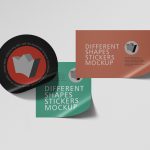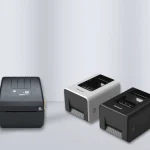A label is one of the most critical elements of a product—it reflects the product’s identity, forms the first connection with the consumer, and often influences the purchasing decision. Label design is not just an aesthetic choice; it is a vital component that affects how the product is perceived in the market. So, what are the key elements to consider in label design?
1. Understanding the Target Audience
The first step in successful label design is identifying the product’s target users. The design for a product aimed at a younger audience should differ significantly from one targeting a corporate demographic.
- For a young and dynamic audience, bold fonts, vibrant colors, and striking graphics can be effective.
- For corporate or health-focused products, clean, reassuring, and information-focused designs are more appropriate.
Target audience analysis directly influences the tone, typography, colors, and visual elements of the label.
2. Choosing the Right Material and Printing Method
Factors such as the product surface, storage conditions, and shelf life play a key role in material selection.
- Thermal labels are ideal for short-term use.
- Coated or PP (polypropylene) labels are suitable for products requiring long shelf life and resistance to external conditions.
- Printing with thermal transfer ribbons increases durability and readability.
Beyond durability, cost and production processes should also be considered when selecting materials.
3. Color and Typography Harmony
Colors used in label design directly influence brand identity and product messaging. Warm tones in food products can stimulate appetite. Blue and green tones are preferred in health-related products for their sense of trust and cleanliness. In typography, readability takes precedence:
- Fonts should not be overly complex.
- Product name, ingredients, and warnings must be distinguishable.
- Different typefaces used on the label should be harmoniously integrated.
4. Legal Requirements and Product Information
A label is not just a marketing tool—it also serves as a legal document. Especially for food, cosmetics, and chemical products, certain information must legally be included:
- Expiration date
- Manufacturer information
- Barcode and lot number
- Ingredient list and warnings
These details must be presented clearly and legibly to ensure both user safety and legal compliance.
5. Proper Placement of Barcodes and Tracking Codes
Barcodes and QR codes on a label are vital for product tracking and sales processes. They should be:
- Positioned for easy scanning by devices
- Printed on non-reflective surfaces to prevent glare
- Produced with high printing quality
These factors are especially important for companies engaged in large-scale production and directly impact operational efficiency.
6. Eye-Catching Design and Brand Consistency
Labels are the product’s first point of interaction with the consumer. Therefore:
- The brand logo should be visible
- The product’s core benefit should be highlighted
- The design language should align with the overall visual identity of the brand.
A label that combines creativity with technical expertise delivers a result that is both aesthetically appealing and functionally effective.
Professional Support in Labeling Solutions: DGS Printing Technologies
Label design and production is a professional process where visual creativity, technical knowledge, and the right material choices converge. At this point, DGS Printing Technologies stands out as one of the leading companies offering end-to-end labeling solutions with its extensive product range and industry experience.
From printed and blank label production to thermal transfer ribbons, barcode printers, and software-supported solutions, DGS provides high-quality and reliable labels that help your products stand out in the market.
For more information and a quote: www.dgs.com.tr/en/






